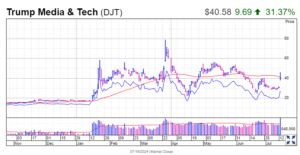
Bitcoin, the world’s leading cryptocurrency, has completed its fourth-ever “halving,” a highly anticipated event occurring approximately every four years. Following the halving, Bitcoin’s market performance remained relatively stable, with a slight decrease to $63,747.
The halving event, designed to reduce the rate of new Bitcoin creation, marks a pivotal change in the cryptocurrency’s underlying technology. Proponents view it as a testament to Bitcoin’s increasing scarcity, aligning with its creator Satoshi Nakamoto’s vision of a finite supply of 21 million tokens. However, sceptics see it as a technical alteration hyped by speculators to inflate the virtual currency’s value artificially.
Industry experts and analysts have offered varied perspectives on the implications of the halving. Some anticipate transformative changes, suggesting that it could drive Bitcoin’s annual inflation rate below that of gold, potentially reshaping investment attitudes and strategies. Others expect heightened market volatility and increased trading activity, potentially leading to price fluctuations and shifts in investor sentiment.
Historical analysis of previous halving events suggests a pattern of heightened market movements and significant price rallies in the aftermath. However, analysts caution against overestimating the predictive value of past events, emphasizing the influence of multiple factors on market dynamics.
While the halving itself may not directly impact Bitcoin’s price in the short term, investors remain optimistic about potential gains in the months ahead. Speculation persists despite concerns about overbought conditions, subdued venture capital funding in the crypto industry, and regulatory uncertainties.
The event also poses challenges for mining companies, as it cuts industry revenues in half, potentially triggering consolidation and closures. However, it could rationalize the network hashrate and industry capital expenditure, ultimately benefiting remaining operators.
Despite near-term uncertainties, expectations of future spot Ethereum ETF approvals, central bank rate cuts, and regulatory developments continue to support high cryptocurrency prices. Bitcoin, currently trading at just under $64,000, remains a focal point of speculation and investment amid ongoing market volatility.






Be First to Comment